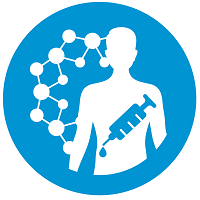Preclinical, Clinical, and Translational Sciences
Rapid Fires: Novel In Silico and In Vitro Approaches in Drug Development 2
Advancing In Vitro Methods for Nose to Brain Delivery - Current Prospects and Future Possibilities
Monday, November 10, 2025
3:45 PM - 4:00 PM CT
Location: 225 CD

Debanjan Das (he/him/his)
Sr. Associate Director, Global R&D & Science Fellow
Bayer Healthcare US LLC
Morristown, New Jersey
Rapid Fire Speaker(s)
The development of robust and predictive in vitro models for nose-to-brain drug delivery remains a critical challenge, particularly for therapeutics which cannot cross the blood–brain barrier (BBB) unaided. In such instances, understanding the nerve-mediated pathways - especially via the olfactory region of the nose becomes essential. Current strategies involve integrated systems such as co-culture models using primary nasal epithelial cells (e.g., RPMI 2650) with neuronal cells may simulating neuronal transport mechanisms. Emerging technologies such as microfluidic “nose-on-a-chip” systems and 3D bio-printed constructs allow dynamic assessment of airflow, mucociliary clearance, drug permeation, and toxicity. Furthermore, novel 3D hydrogel models incorporating immunological, glial, and neurovascular elements (Stanton et al.2024), offer in vivo-like features including neuronal signaling and barrier integrity, which are vital for evaluating nerve-specific uptake. Together, these complementary models represent powerful preclinical tools to optimize and de-risk intranasal drug formulations prior to advancing into in vivo studies.
Learning Objectives:
- Design integrative approaches for advanced & predictive in vitro models for neuron-mediated uptake and transport of drugs to brain through nasal delivery, focusing on drugs which doesn't cross BBB unaided.
- Advance the field of nose to brain delivery of a variety of drug molecules, including small molecules and biologics, by rapidly screening drug substances as well as finished formulations.
- Mechanistically study the uptake mechanisms of nose to brain pathways and how advanced formulations can enable and/or enhance bioavailability in brain delivered via nose
- Understand the toxicological implications of advanced formulations in vitro and thereby optimize the dose and/or formulation excipients using in vitro methods


